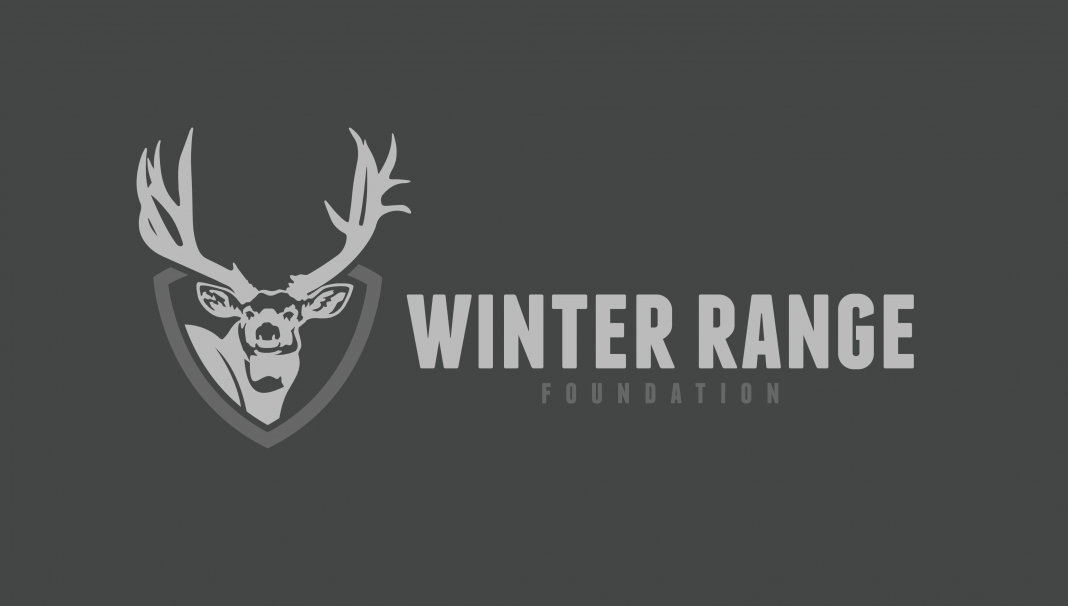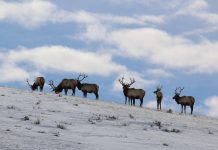Many individuals have had the opportunity to witness majestic animals on the winter range. The winter range landscape provides an opportunity for animals to survive and provides endless opportunities for people to enjoy the wildlife around us. Winter ranges are extremely important, not only for the survival of wildlife but also for the quality of life in which they live. Most sportsmen, whether they’re hunters, hikers, videographers, photographers, etc., have had the opportunity to witness the winter ranges of animals. They are absolutely spectacular! For those men and women lucky enough to live close to the winter ranges or along the winter range migration routes, they get to witness some of the most majestic animals in their prime.
Winter Ranges Need Support
There are many non-profit foundations that focus on a specific species. Those foundations have done amazing work to improve the habitat, growth, protection, and much more for those species. However, more can and needs to be done. Whether during the migration to a winter range or on the winter range itself, thousands of animals are killed each year. A single stretch of highway or railway alone can kill hundreds of animals as they make their way to their winter homes.
Migration Routes
Safe migration routes have become a hot topic that has reached the congressional level.
As a result, we wrote an article last year that stated that Congress is considering passing a transportation bill worth $250 million dollars to improve migration routes for animals across the United States. Subsequently, this attention comes with good reason. As stated above, thousands of animals are killed on their migration routes each year. In 2017, WyoFile published an article that a single railway killed over 50 elk and dozens of pronghorn in Southern Lincoln County of Wyoming. Interstate 80 is another executioner of animals migrating to the winter range. A simple Google search will display a plethora of stories of deer, elk, moose, etc. being hit by vehicles. During these incidents, not only are animals killed, but also humans. Sadly, the statistics of people being killed each year by migrating animals is staggering.
Habitat
To survive the winter, animals of all kinds need a good habitat. Snow and ice-covered areas make it difficult for animals to find good food sources. It takes a lot of work from wildlife biologists and conservationists to provide a habitat that allows for animals to not only survive the winter but flourish. Winter range habitats have also gotten the attention of many people across the United States. In April of 2020, the Department of the Interior announced that 24.7 million dollars would be allocated towards winter range habitat conservation and winter range migration routes.
“Elk, mule deer, and pronghorn face increasing obstacles from highway traffic, development, and habitat degradation as they navigate migration corridors that connect vast stretches of our western landscapes. Working with the Department of the Interior, and other partners, such as ConocoPhillips and BNSF Railways, these NFWF awards support the work of local organizations as they implement projects that will reduce vehicle collisions and help to ensure healthy populations of these iconic animals.” – NFWF Executive Director and CEO Jeff Trandahl
Animals In Need
As we think of animals on the winter range, our minds gravitate towards deer, elk, and bison, and for good reason. However, there are many other species of animals that survive on the winter landscape that need our help.
Snowshoe Hare
- The snowshoe hare is an animal seen quite often on the winter landscape. Even though their coat provides a wonderful camouflage when there’s snow on the ground. The snowshoe hare has large feet that allow it to maneuver well in the snow, which provides a way for it to escape predators such as foxes, coyotes, and other predators that must also survive on the winter range.
Pikas
- Pikas are small animals that look like a mix between a rabbit and a mouse. They live in high elevations but do not hibernate. Pikas remain active during the winter, and they spend the majority of the summer months preparing for winter. They will stockpile their food so that they have what they need during the cold months.
Upland Game
- There are many species of upland game that survive on the winter range. Pheasants, sage grouse, and much more are active during the winter months. It is difficult for these animals to find food sources through the snow and ice. They travel many miles each winter looking for something to eat.
Ungulates
- As mentioned above, ungulates are the most common animals that come to mind when we think of winter ranges. Deer, elk, moose, and bison just to name a few. These animals migrate to lower elevations to survive the winters. Their migration routes can be hundreds of miles.
These are just a few of the animals that attempt to survive on the winter range. Many of them don’t make it. Due to a lack of food, or just the bitter cold, many succumb to the winter range lifestyle.
The Winter Range Foundation
The Winter Range Foundation was established to help improve the items listed above. We will do everything in our power to help animals as they migrate to the winter range and to survive the winter. Likewise, our mission statement is to ensure the conservation of winter ranges for all wildlife, now and for generations to come. We truly mean that! The winter ranges are in danger. In turn, the animals that survive on the winter range are also in danger. Whether you enjoy hunting these animals, taking pictures of them, or just enjoy taking a trip with the family to see some of God’s greatest creations, we must all do our part to help save the winter ranges.
Upcoming Project with the Winter Range Foundation:
Our next project is scheduled for July 31st from 8:00 am-2:00 pm in between Soda Lake and Fremont Lake near Pinedale Wyoming. If you are interested in attending please send an email to support@winterrange.org or call/text us at 307-231-6252. Lunch will be provided for those who volunteer. There is some unwanted barbed wire fencing in the area. That barbed wire will be cleared out as it is directly in the migration route of elk and mule deer.
















